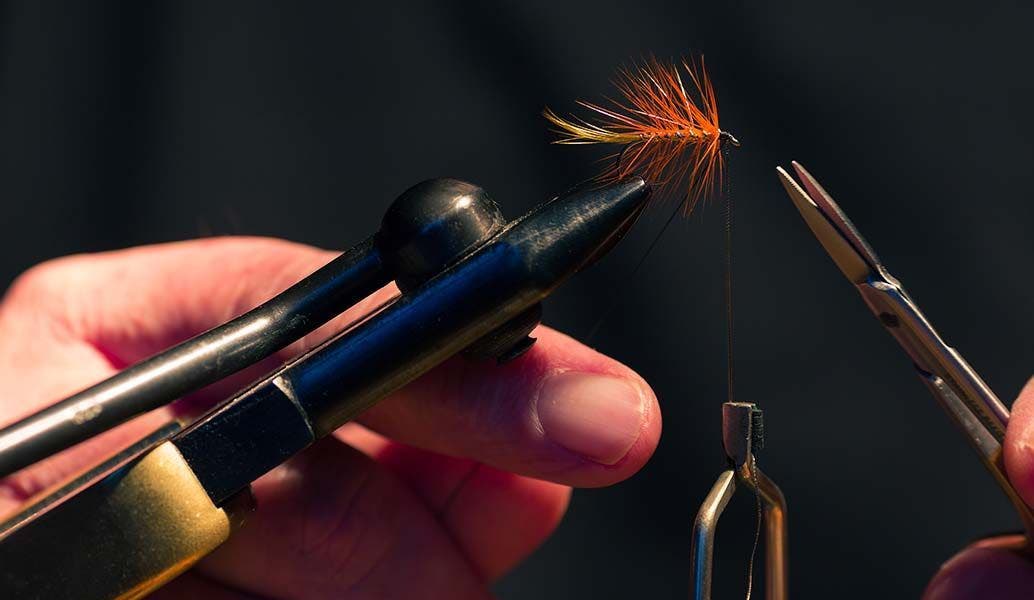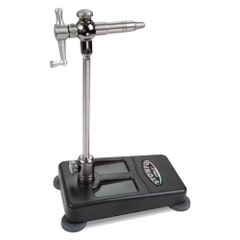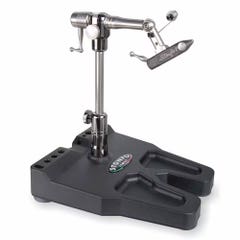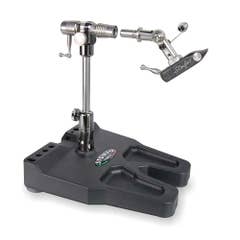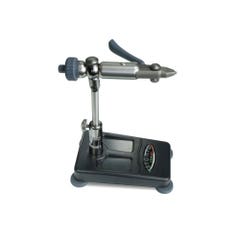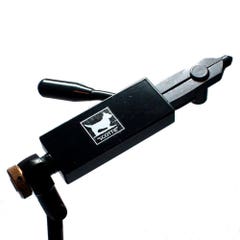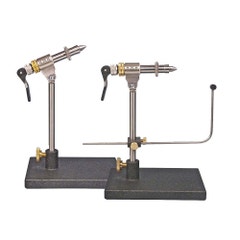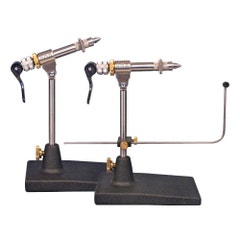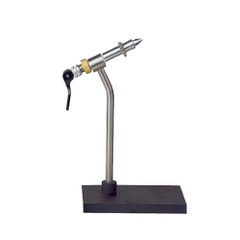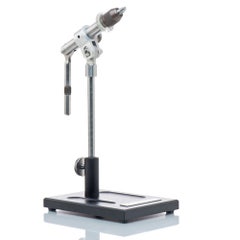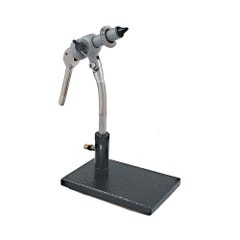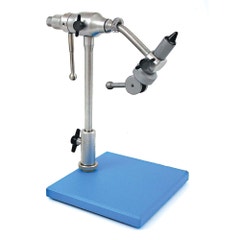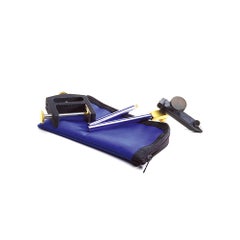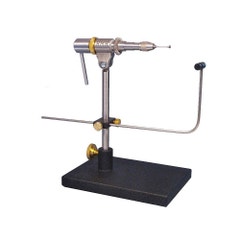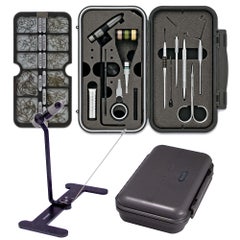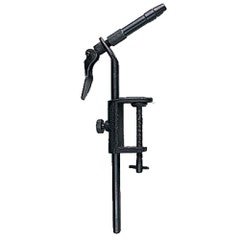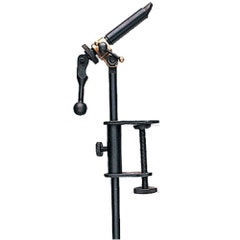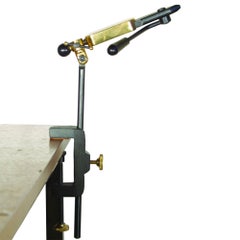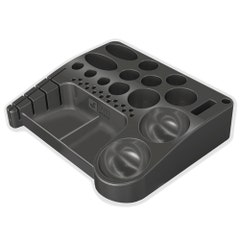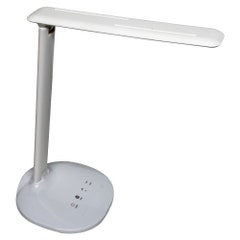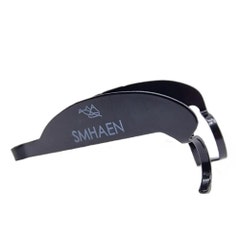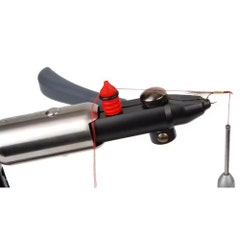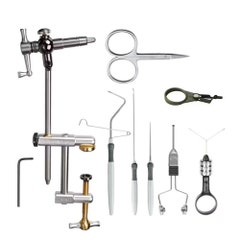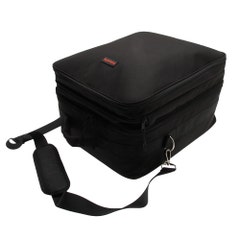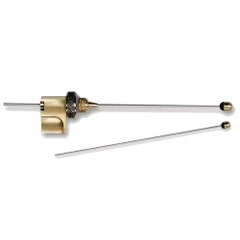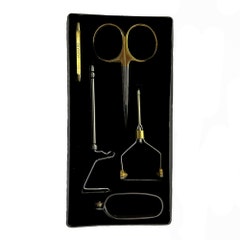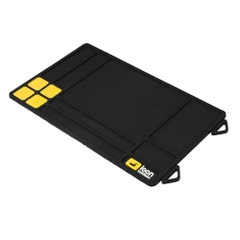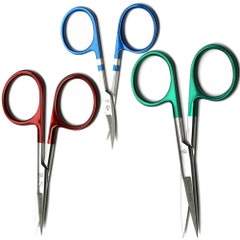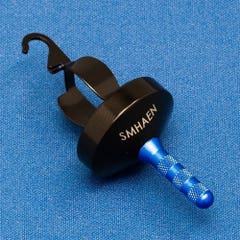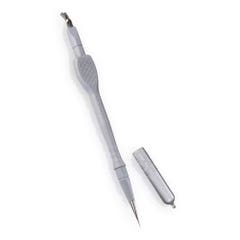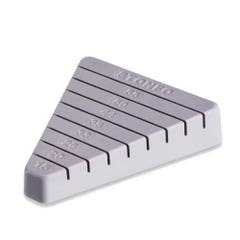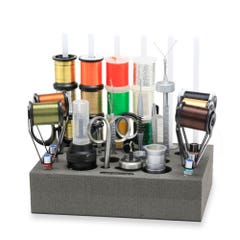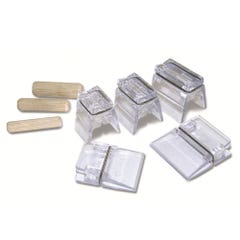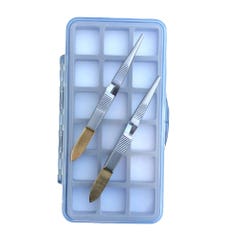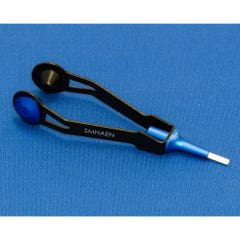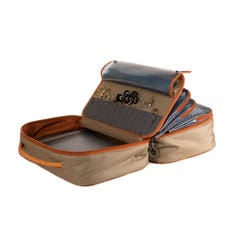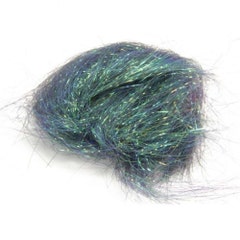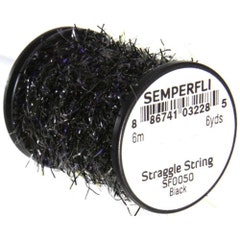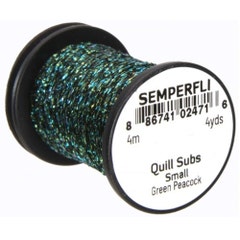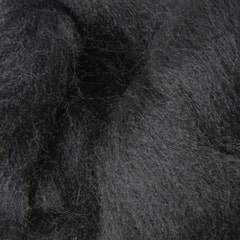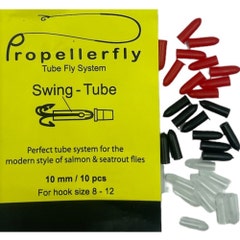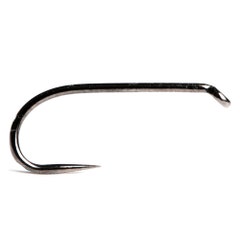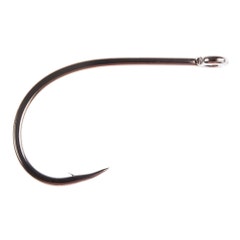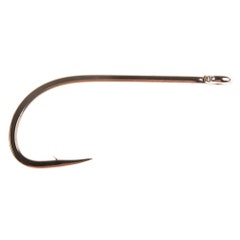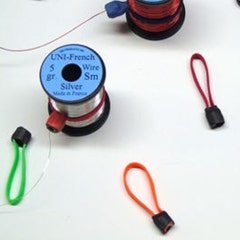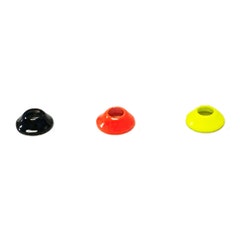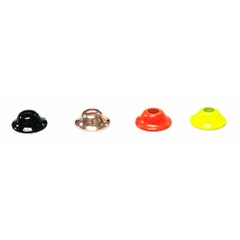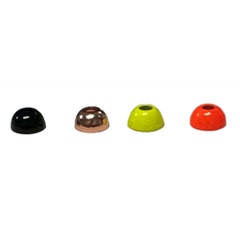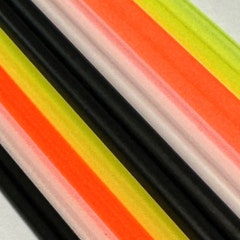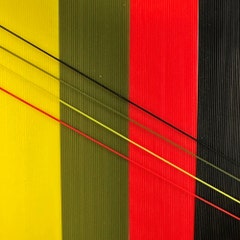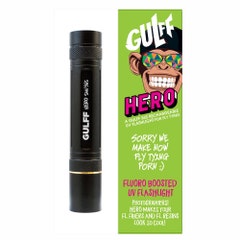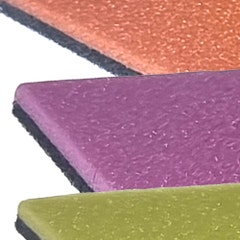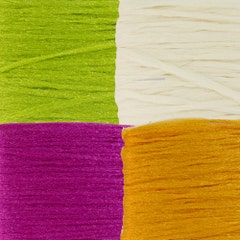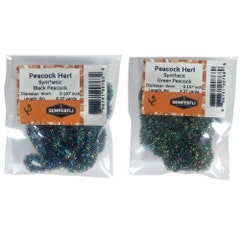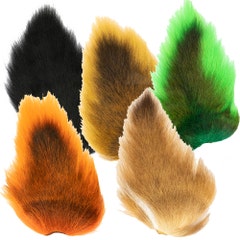This age-old traditional art has, however, evolved markedly in more recent years and now new ranges of modern, machine-made synthetic materials allow us to push the boundaries of fly fishing, tie ever different patterns, and chase hundreds of different species in both fresh and saltwater. In addition to the usual trout and salmon species we now fish for everything from bonefish to pike and from GTs to mahseer with artificial flies and the current trends in materials are opening ever more doors to more adventurous anglers.
Ben's Top Tips for Fly Tying
Tying your own flies allows you to add a new dimension to your fishing by giving you the opportunity to create new patterns that the fish haven’t seen before, or that aren’t commercially available, and this can give you a huge edge over other anglers. For many, there is also a greater satisfaction to be gained from catching a fish that you have fooled with a pattern that you invented, or that you tied yourself. There are no hard and fast rules when it comes to tying so you are only limited by your own imagination and it is often that little extra trigger or slight variation in material that can set your pattern apart from everybody else and bring more fish to the net.Getting started in tying can be a daunting prospect, with the myriad of products on the market it can be very difficult for a beginner to know where to start. Which vice do you buy? What fly tying tools do you need? What fly tying materials? What hooks? The list is seemingly endless and it can all be very confusing, but don’t panic – it’s not actually as difficult as you may think and the Sportfish team is always happy to help.
 Ben Fly Tying at the Sportfish Reading Show
Ben Fly Tying at the Sportfish Reading ShowFly Tying Vices
Your fly tying vice is likely to be your single biggest investment during your tying career and there are hundreds on the market that range greatly in both price and quality; you can start from as little as £30 and go up to as much as £500. Vices come as either a pedestal or clamp base. The clamp is easier for travelling with as they are generally small and lightweight, whereas a pedestal base offers solid seating on a desk at home but is cumbersome and heavy to travel with. Remember though, it’s always possible to find somewhere to place a pedestal but it’s not always possible to find somewhere to screw a clamp.Things to Consider When Choosing a Vice
What type of flies am I going to tie?
Most modern vices cater for the whole variety of different patterns that you will choose to tie, with the ability to tie anything from a #6 to a #20. However, if you are looking for a more specialised piece of equipment for much larger flies when targeting saltwater and large freshwater species then there are vices that can cover that too.Will I be travelling with my vice?
There are travel vices available on the market, but the real issue is that they are just for travel, and perhaps not so useful for when you are at home. They are ideal if you do a lot of travel, and something like the C&F Marco Polo set is a fantastic product for travel - it has a vice, a stunning selection of tools, a hook tray and a strong box to keep it all safe. However, if you don’t travel as much, then the lightweight HMH or Anvil vices will suffice with G-clamps.What is my budget?
It is generally recommended that you buy the best vice you can afford and it is a worthwhile investment as many of the premium vices come with a lifetime guarantee, such as HMH and Dyna-King.Watch Ben tie the Diawl Bach fly below.
Fly Tying Tools
Tools can be another big investment but when getting started you will not need many, just the essentials. As you progress other tools will become necessary to construct more advanced patterns and tying techniques. The key essentials are as follows:Bobbin holders
The first item on your tool shopping list will be a bobbin holder and there are two main styles that we use: cheaper stainless bobbins, or more expensive ceramic lined types.Ceramic models offer you a smoother thread feed and are less prone to wear and tear, both of themselves and the thread. A rotary whip finish tool will allow you to finish your creations securely and easily to avoid your flies falling apart and putting all your hard work to waste.
Dubbing needles
A dubbing needle, or bodkin, is essential for applying varnish to your finished fly and for teasing bushy fibres to create a ‘scruffier’ and ‘leggier’ appearance on your patterns. This is often essential when tying traditional wet or dry flies. For these flies, you will also need hackle pliers to accurately and easily wrap the hackle around your desired fly.Scissors
Scissors with a sharp set of blades and fine points are essential and like your vice these are an investment as the better the pair, the neater and more precise you can make your cuts. With a quality pair of scissors you should be able to cut an individual hair on a small dry fly. Tungsten carbide blades are perfect but try to avoid cutting tinsel and wire as they tend to dull the blades. In the case of wire, tie it off tightly and then wiggle it around until it breaks - this leaves a much neater head and saves your scissors.Hooks
Hooks can be very confusing when you are a beginner as there are so many shapes, sizes and wire gauges to consider. Each design has its own use and this needs to be carefully considered, for example dry flies require a lighter gauge wire so as not to pull your fly underwater whereas a lure, nymph or wet fly requires a heavier gauge to help your fly fall naturally through the water column.Fly Tying Materials
When choosing starter materials there are two main options.- You can purchase a fly-tying starter set that comes with a good selection of materials and details of the patterns you can tie with them. This is a superb base from which you can slowly build up your materials and pattern selections.
- The second approach is to look at the type of fishing you mostly do, be that river, lake or reservoir, and select some of your ‘go to’ patterns that you would like to recreate and buy the specific materials that you need to create them.
Why not watch Ben tie his 'Fly of the Month' for August 2017 below!
Why not watch Ben tie his 'Fly of the Month' for September 2017 below!
Why not watch Ben tie his 'Fly of the Month' for October 2017 below!
Why not watch Ben tie his 'Fly of the Month' for November 2017 below!
Why not watch Ben tie his 'Fly of the Month' for December 2017 below!
Why not watch Ben tie his 'Fly of the Month' for January 2018 below!
Why not watch Ben tie his 'Fly of the Month' for February 2018 below!
Why not watch Ben tie his 'Fly of the Month' for March 2018 below!
Why not watch Ben tie his 'Fly of the Month' for April 2018 below!
Why not watch Ben tie his 'Fly of the Month' for May 2018 below!
Why not watch Ben tie his 'Fly of the Month' for June 2018 below!
Why not watch Ben tie his 'Fly of the Month' for July 2018 below!
Fly tying, or entomology binding for the more scientifically minded, is a natural progression in the career of a fly fisherman or woman and is simply the art of creating an artificial imitation using a variety of furs, feathers and other materials to fool your target species.
This age-old traditional art has, however, evolved markedly in more recent years and now new ranges of modern, machine-made synthetic materials allow us to push the boundaries of fly fishing, tie ever different patterns, and chase hundreds of different species in both fresh and saltwater. In addition to the usual trout and salmon species we now fish for everything from bonefish to pike and from GTs to mahseer with artificial flies and the current trends in materials are opening ever more doors to more adventurous anglers.
Ben's Top Tips for Fly Tying
Tying your own flies allows you to add a new dimension to your fishing by giving you the opportunity to create new patterns that the fish haven’t seen before, or that aren’t commercially available, and this can give you a huge edge over other anglers. For many, there is also a greater satisfaction to be gained from catching a fish that you have fooled with a pattern that you invented, or that you tied yourself. There are no hard and fast rules when it comes to tying so you are only limited by your own imagination and it is often that little extra trigger or slight variation in material that can set your pattern apart from everybody else and bring more fish to the net.
Getting started in tying can be a daunting prospect, with the myriad of products on the market it can be very difficult for a beginner to know where to start. Which vice do you buy? What fly tying tools do you need? What fly tying materials? What hooks? The list is seemingly endless and it can all be very confusing, but don’t panic – it’s not actually as difficult as you may think and the Sportfish team is always happy to help.
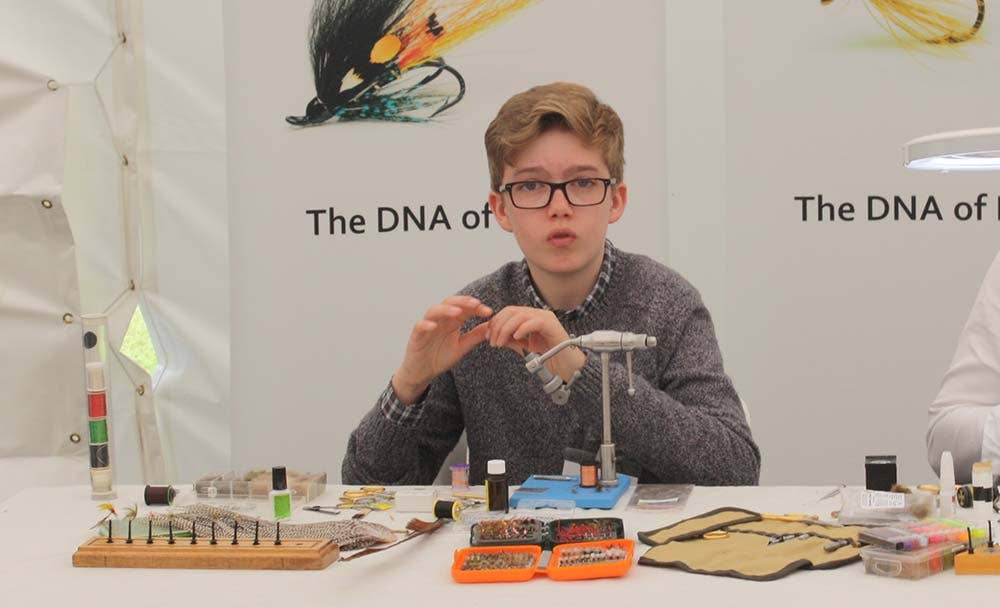

Fly Tying Vices
Your fly tying vice is likely to be your single biggest investment during your tying career and there are hundreds on the market that range greatly in both price and quality; you can start from as little as £30 and go up to as much as £500. Vices come as either a pedestal or clamp base. The clamp is easier for travelling with as they are generally small and lightweight, whereas a pedestal base offers solid seating on a desk at home but is cumbersome and heavy to travel with. Remember though, it’s always possible to find somewhere to place a pedestal but it’s not always possible to find somewhere to screw a clamp.
Things to Consider When Choosing a Vice
What type of flies am I going to tie?
Most modern vices cater for the whole variety of different patterns that you will choose to tie, with the ability to tie anything from a #6 to a #20. However, if you are looking for a more specialised piece of equipment for much larger flies when targeting saltwater and large freshwater species then there are vices that can cover that too.
Will I be travelling with my vice?
There are travel vices available on the market, but the real issue is that they are just for travel, and perhaps not so useful for when you are at home. They are ideal if you do a lot of travel, and something like the C&F Marco Polo set is a fantastic product for travel - it has a vice, a stunning selection of tools, a hook tray and a strong box to keep it all safe. However, if you don’t travel as much, then the lightweight HMH or Anvil vices will suffice with G-clamps.
What is my budget?
It is generally recommended that you buy the best vice you can afford and it is a worthwhile investment as many of the premium vices come with a lifetime guarantee, such as HMH and Dyna-King.
Watch Ben tie the Diawl Bach fly
Fly Tying Tools
Tools can be another big investment but when getting started you will not need many, just the essentials. As you progress other tools will become necessary to construct more advanced patterns and tying techniques. The key essentials are as follows:
Bobbin holders
The first item on your tool shopping list will be a bobbin holder and there are two main styles that we use: cheaper stainless bobbins, or more expensive ceramic lined types.
Ceramic models offer you a smoother thread feed and are less prone to wear and tear, both of themselves and the thread. A rotary whip finish tool will allow you to finish your creations securely and easily to avoid your flies falling apart and putting all your hard work to waste.
Dubbing needles
A dubbing needle, or bodkin, is essential for applying varnish to your finished fly and for teasing bushy fibres to create a ‘scruffier’ and ‘leggier’ appearance on your patterns. This is often essential when tying traditional wet or dry flies. For these flies, you will also need hackle pliers to accurately and easily wrap the hackle around your desired fly.
Scissors
Scissors with a sharp set of blades and fine points are essential and like your vice these are an investment as the better the pair, the neater and more precise you can make your cuts. With a quality pair of scissors you should be able to cut an individual hair on a small dry fly. Tungsten carbide blades are perfect but try to avoid cutting tinsel and wire as they tend to dull the blades. In the case of wire, tie it off tightly and then wiggle it around until it breaks - this leaves a much neater head and saves your scissors.
Fly Tying Hooks
Fly tying hooks can be very confusing when you are a beginner as there are so many shapes, sizes and wire gauges to consider. Each design has its own use and this needs to be carefully considered, for example dry flies require a lighter gauge wire so as not to pull your fly underwater whereas a lure, nymph or wet fly requires a heavier gauge to help your fly fall naturally through the water column.
Fly Tying Materials
When choosing starter materials there are two main options.
- You can purchase a fly-tying starter set that comes with a good selection of materials and details of the patterns you can tie with them. This is a superb base from which you can slowly build up your materials and pattern selections.
- The second approach is to look at the type of fishing you mostly do, be that river, lake or reservoir, and select some of your ‘go to’ patterns that you would like to recreate and buy the specific materials that you need to create them.
Whichever route you take, you will be amazed just how many different flies you can tie with a relatively small selection of materials.

